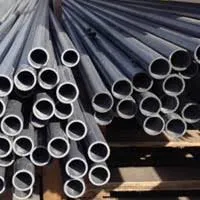
-
 Afrikaans
Afrikaans -
 Albanian
Albanian -
 Amharic
Amharic -
 Arabic
Arabic -
 Armenian
Armenian -
 Azerbaijani
Azerbaijani -
 Basque
Basque -
 Belarusian
Belarusian -
 Bengali
Bengali -
 Bosnian
Bosnian -
 Bulgarian
Bulgarian -
 Catalan
Catalan -
 Cebuano
Cebuano -
 China
China -
 China (Taiwan)
China (Taiwan) -
 Corsican
Corsican -
 Croatian
Croatian -
 Czech
Czech -
 Danish
Danish -
 Dutch
Dutch -
 English
English -
 Esperanto
Esperanto -
 Estonian
Estonian -
 Finnish
Finnish -
 French
French -
 Frisian
Frisian -
 Galician
Galician -
 Georgian
Georgian -
 German
German -
 Greek
Greek -
 Gujarati
Gujarati -
 Haitian Creole
Haitian Creole -
 hausa
hausa -
 hawaiian
hawaiian -
 Hebrew
Hebrew -
 Hindi
Hindi -
 Miao
Miao -
 Hungarian
Hungarian -
 Icelandic
Icelandic -
 igbo
igbo -
 Indonesian
Indonesian -
 irish
irish -
 Italian
Italian -
 Japanese
Japanese -
 Javanese
Javanese -
 Kannada
Kannada -
 kazakh
kazakh -
 Khmer
Khmer -
 Rwandese
Rwandese -
 Korean
Korean -
 Kurdish
Kurdish -
 Kyrgyz
Kyrgyz -
 Lao
Lao -
 Latin
Latin -
 Latvian
Latvian -
 Lithuanian
Lithuanian -
 Luxembourgish
Luxembourgish -
 Macedonian
Macedonian -
 Malgashi
Malgashi -
 Malay
Malay -
 Malayalam
Malayalam -
 Maltese
Maltese -
 Maori
Maori -
 Marathi
Marathi -
 Mongolian
Mongolian -
 Myanmar
Myanmar -
 Nepali
Nepali -
 Norwegian
Norwegian -
 Norwegian
Norwegian -
 Occitan
Occitan -
 Pashto
Pashto -
 Persian
Persian -
 Polish
Polish -
 Portuguese
Portuguese -
 Punjabi
Punjabi -
 Romanian
Romanian -
 Russian
Russian -
 Samoan
Samoan -
 Scottish Gaelic
Scottish Gaelic -
 Serbian
Serbian -
 Sesotho
Sesotho -
 Shona
Shona -
 Sindhi
Sindhi -
 Sinhala
Sinhala -
 Slovak
Slovak -
 Slovenian
Slovenian -
 Somali
Somali -
 Spanish
Spanish -
 Sundanese
Sundanese -
 Swahili
Swahili -
 Swedish
Swedish -
 Tagalog
Tagalog -
 Tajik
Tajik -
 Tamil
Tamil -
 Tatar
Tatar -
 Telugu
Telugu -
 Thai
Thai -
 Turkish
Turkish -
 Turkmen
Turkmen -
 Ukrainian
Ukrainian -
 Urdu
Urdu -
 Uighur
Uighur -
 Uzbek
Uzbek -
 Vietnamese
Vietnamese -
 Welsh
Welsh -
 Bantu
Bantu -
 Yiddish
Yiddish -
 Yoruba
Yoruba -
 Zulu
Zulu
inserting rock bits techniques and strategies for efficient ...
Inserting Rock Bits Techniques and Strategies for Efficient Drilling
In the mining and drilling industries, the efficiency of operations is paramount, not only to reduce costs but also to enhance productivity. One of the critical components in this process is the selection and insertion of rock bits. Rock bits are essential tools used in the drilling of hard materials, and the effectiveness of these bits can significantly impact the overall outcome of drilling projects. This article explores various techniques and strategies for the efficient insertion of rock bits, aimed at optimizing drilling performance.
Understanding Rock Bits
Rock bits come in various types depending on the geological characteristics of the material being drilled. The most common types include roller cone bits and diamond bits. Roller cone bits utilize hardened steel points or tungsten carbide inserts to break rock, while diamond bits employ industrial diamonds for their cutting surfaces. The choice of rock bit is influenced by several factors, including rock hardness, formation type, and the specific goals of the drilling operation.
Techniques for Efficient Insertion
1. Bit Selection The first step towards efficient drilling is selecting the right rock bit. This involves analyzing the geological conditions of the site to determine the most suitable bit type. A thorough understanding of the rock formation can help in making informed decisions regarding the hardness and abrasiveness of the material.
inserting rock bits techniques and strategies for efficient ...

2. Proper Weight Distribution Efficient insertion of rock bits requires an optimal weight distribution. The weight on the bit needs to be adequately managed to prevent excessive wear or premature failure. Adjusting the weight based on the drilled material ensures that the bit remains effective longer while maintaining drilling speeds.
3. Drilling Parameters Adjusting the drilling parameters — such as rotary speed, rate of penetration (ROP), and mud flow — can significantly impact the performance of rock bits. Maintaining the right balance between these parameters is crucial for avoiding bit damage and maximizing drilling efficiency.
4. Monitoring and Maintenance Regular monitoring of the drilling operations can identify potential issues that may impede the performance of rock bits. Implementing a maintenance schedule for inspecting and replacing worn bits can reduce downtime and enhance the overall productivity of drilling operations.
5. Utilizing Advanced Technologies Innovations in drilling technologies, such as real-time monitoring systems and predictive analytics, can facilitate the insertion process. These technologies allow for adjustments based on immediate feedback from drilling activities, thereby improving efficiency.
Conclusion
Inserting rock bits efficiently is a multifaceted task that requires careful planning, execution, and monitoring. By employing strategic techniques, such as optimal bit selection, effective weight distribution, and leveraging advanced technology, drilling operations can achieve significant enhancements in productivity and cost savings. As the industry continues to evolve, embracing these strategies will be essential for adapting to the ever-changing demands of drilling projects.









